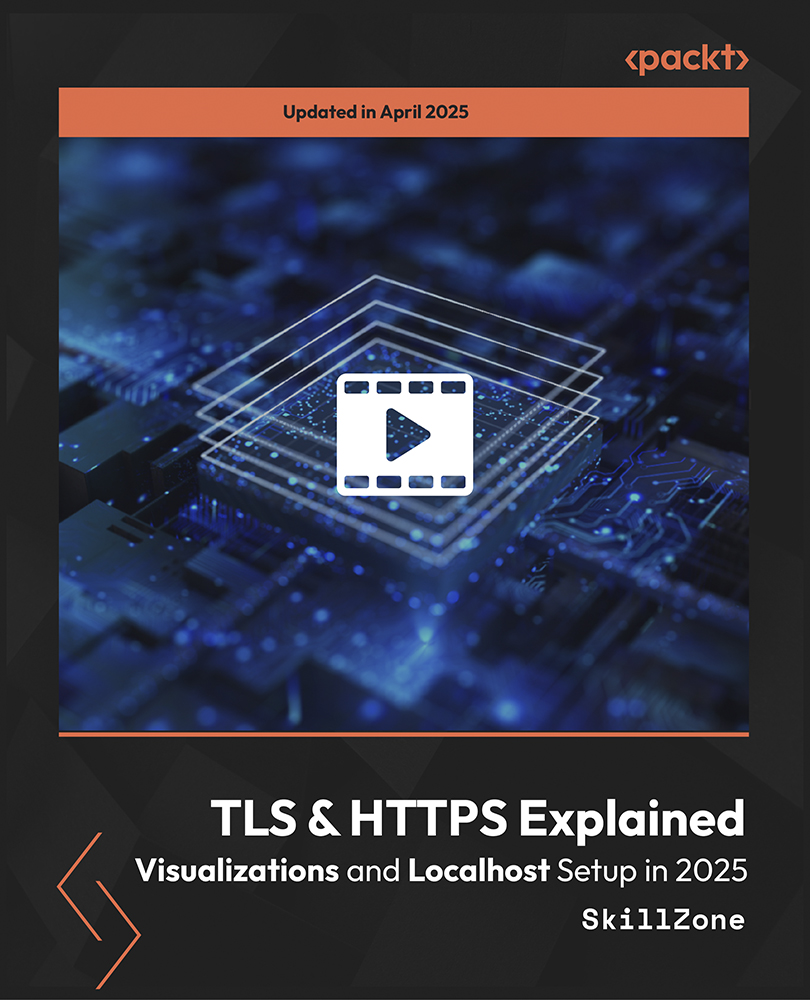-
Interactive traffic captures make encryption concepts visually intuitive
-
Comprehensive TLS and PKI walkthroughs reveal the full certificate trust chain
-
Hands-on localhost server setup bridges theory with real-world application
Start your journey by exploring how HTTP works and why HTTPS is critical, with early lessons focusing on capturing and inspecting HTTP and encrypted traffic. You'll build a strong understanding of symmetric and asymmetric encryption, hashing, and modern encryption algorithms using OpenSSL and Wireshark.
Next, you’ll dive into the architecture of TLS and how it works with the Public Key Infrastructure. This section unpacks the TLS handshake, hashing for integrity, digital signatures for authenticity, and how certificates are issued and validated. You’ll even examine TLS 1.3, quantum-ready algorithms, and the hybrid key exchange process.
Finally, you'll bring theory to practice by creating your own HTTPS server using XCA, OpenSSL, and Node. This section guides you through building a local certificate authority, generating server keys, and launching your own secure localhost server. By course end, you’ll fully understand how secure web communication is built, verified, and deployed.
This course is ideal for web developers, ethical hackers, IT professionals, and tech learners aiming to understand secure web protocols. Some networking familiarity is helpful, but all tools and concepts are taught from scratch, making the course accessible yet in-depth.
-
Understand HTTPS encryption and secure communication flow
-
Inspect HTTP and HTTPS traffic using Wireshark hands-on
-
Apply symmetric and asymmetric key encryption concepts
-
Set up a local Certificate Authority using XCA and OpenSSL
-
Configure secure HTTPS servers using Node and mkcert tools
-
Analyze TLS handshakes including TLS 1.3 and post-quantum setups
 United States
United States
 Great Britain
Great Britain
 India
India
 Germany
Germany
 France
France
 Canada
Canada
 Russia
Russia
 Spain
Spain
 Brazil
Brazil
 Australia
Australia
 South Africa
South Africa
 Thailand
Thailand
 Ukraine
Ukraine
 Switzerland
Switzerland
 Slovakia
Slovakia
 Luxembourg
Luxembourg
 Hungary
Hungary
 Romania
Romania
 Denmark
Denmark
 Ireland
Ireland
 Estonia
Estonia
 Belgium
Belgium
 Italy
Italy
 Finland
Finland
 Cyprus
Cyprus
 Lithuania
Lithuania
 Latvia
Latvia
 Malta
Malta
 Netherlands
Netherlands
 Portugal
Portugal
 Slovenia
Slovenia
 Sweden
Sweden
 Argentina
Argentina
 Colombia
Colombia
 Ecuador
Ecuador
 Indonesia
Indonesia
 Mexico
Mexico
 New Zealand
New Zealand
 Norway
Norway
 South Korea
South Korea
 Taiwan
Taiwan
 Turkey
Turkey
 Czechia
Czechia
 Austria
Austria
 Greece
Greece
 Isle of Man
Isle of Man
 Bulgaria
Bulgaria
 Japan
Japan
 Philippines
Philippines
 Poland
Poland
 Singapore
Singapore
 Egypt
Egypt
 Chile
Chile
 Malaysia
Malaysia












